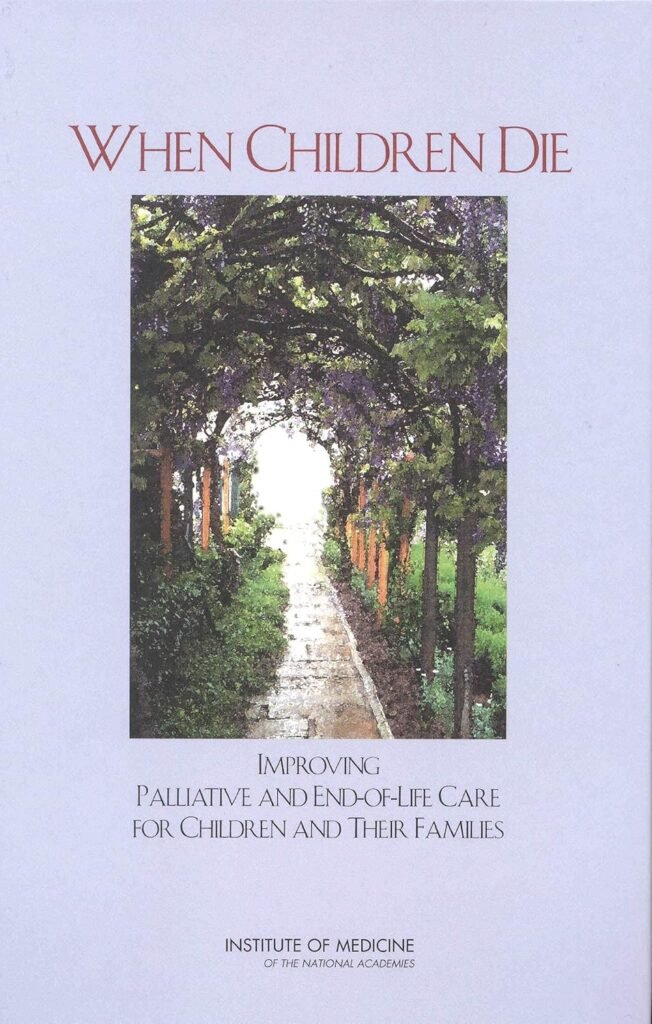Have you ever found yourself searching for a compassionate and insightful resource to help navigate the challenging waters of pediatric palliative and end-of-life care? If so, “When Children Die: Improving Palliative and End-of-Life Care for Children and Their Families Kindle Edition” might be the guide you’re looking for. This book isn’t just a resource; it feels like sitting down with a knowledgeable friend who offers both comfort and guidance during one of life’s most difficult experiences.
Understanding the Importance of Palliative Care for Children
The topic of pediatric palliative care is not typically one that’s comfortable to discuss, yet it’s an essential conversation for families and healthcare professionals alike. The book underscores how palliative care is about more than just managing pain. It’s a holistic approach that considers the physical, emotional, and spiritual needs of both the child and their family. You’ll find that it provides a deep acknowledgment of the challenges and emphasizes the importance of personalized care plans.
A Family-Centered Approach
The main focus here is on how families are integral to palliative care, as much a part of the process as the medical professionals involved. By recognizing the dynamics at play in families facing end-of-life care, the book provides strategies to empower and support them. You might appreciate how it addresses the emotional and psychosocial elements, making it clear that these aspects are as critical as the medical care being provided.
When to Begin Palliative Care
Knowing when and how to introduce palliative care can be a delicate process. The book tackles this by offering guidelines on timing and communication, ensuring that you as a caregiver or loved one feel comfortable initiating these conversations. It’s about opening up pathways for communication, being sensitive to the child’s needs, and recognizing the right moments to engage these services.
When Children Die: Improving Palliative and End-of-Life Care for Children and Their Families Kindle Edition
Comprehensive Insights Offered in the Book
This book isn’t just an exposition of theory but a practical guide that is easy to digest and apply in real-world situations. It’s like having a toolkit filled with the wisdom and experiences of various healthcare professionals.
Evidence-Based Practices
What sets this book apart is its reliance on evidence-based practices. The emphasis on using solid, research-backed techniques means you can trust the information as you make critical decisions. The book helps parse through complex studies and presents the data simply. You don’t need a medical degree to understand the recommendations, but if you have one, the thorough research won’t disappoint you either.
Cultural Sensitivity and Inclusivity
One of the more heartening aspects of this text is its dedication to cultural sensitivity. The authors are careful to address different cultural approaches to end-of-life care, respecting how these practices impact decision-making. Whatever your background, you will find guidance that respects cultural values and beliefs and offers recommendations for healthcare professionals to incorporate this understanding into care strategies.
Emotional Support for Families
It’s comforting to know that this book doesn’t just stop at medical advice—it dives deep into emotional and psychological support, something often overlooked.
Coping Mechanisms and Emotional Resources
You will find various coping mechanisms laid out in detail, helping families navigate their grief and anxiety. Topics covered include stress management, emotional resilience, and dealing with guilt. You can almost feel the empathy through the pages, offering a virtual hand to hold.
Supporting Siblings and Extended Family
The narrative takes special care to address the whole family unit, not just immediate caregivers. This is important because siblings and extended family members often need support too. The book highlights ways to communicate effectively with children about death, offering age-appropriate strategies and emotional tools.
The Role of Healthcare Professionals
What responsibilities do healthcare professionals carry in this sensitive area? The book delves into these aspects, offering sage advice for both seasoned professionals and those new to pediatric care.
Interdisciplinary Teamwork
A section dedicated to interdisciplinary coordination emphasizes the importance of communication among various healthcare providers. It’s about creating a cohesive care plan where every participant knows their role, thus minimizing stress for the family.
| Aspect | Description |
|---|---|
| Communication | Offers strategies to streamline information sharing |
| Role Clarity | Helps each team member understand their responsibilities |
| Family Integration | Encourages involving family members in meetings and decision-making processes |
Professional Development
For healthcare professionals, ongoing education is crucial. This book points out areas for professional development and growth, emphasizing the importance of empathy training and awareness. It’s spoken of as a journey—one that continues to adapt and grow with each new piece of information and case study.
Practical Tools and Resources
Alongside theoretical insights, practical tools are provided, crucial for implementing the strategies discussed. You’ll find that these tools are both comprehensive and easily adaptable.
Checklists and Protocols
There are numerous checklists and protocols provided to ensure no detail is overlooked. These are geared toward streamlining processes and providing clarity during critical moments. They act like safety nets, ensuring that you, as a caregiver, aren’t overwhelmed by trying to remember every little detail.
Case Studies and Real-Life Narratives
With real-life narratives included, the book doesn’t just tell you what to do; it shows how these methods have been successfully implemented. These case studies allow you to see yourself in similar situations, providing comfort and practical examples to emulate.
Overcoming Challenges in Palliative Care
The journey through palliative care is fraught with challenges, and this book doesn’t shy away from discussing them openly.
Navigating Healthcare Systems
Understanding the ins and outs of healthcare systems can be daunting, especially when you’re already dealing with emotional stress. The book provides insights into navigating these systems, advocating for the child, and understanding your rights and options.
Finances and Legal Considerations
Financial and legal matters are often the elephant in the room. This guide steps up to break down these complex topics, offering resources and advice to manage them. You might find this section particularly helpful as it cuts through the confusion and gives straightforward, empathetic advice.
Long-term Impact and Legacy
Finally, the book discusses the long-term impact of pediatric palliative care on families and ways to honor the legacy of the child.
Honoring Memories
It’s important to honor the memories of lost loved ones, and the book offers guidance on how to do this within family dynamics. Whether it’s creating family rituals or setting up charitable endeavors in the child’s name, the book offers heartfelt suggestions.
Sustaining Family Bonds
After the immediate crisis has passed, maintaining family bonds is essential. The book provides insight into how families might recalibrate and recalibrate life post-crisis, ensuring that relationships remain strong and supportive.
Delving into “When Children Die: Improving Palliative and End-of-Life Care for Children and Their Families Kindle Edition” feels like less of a task and more a conversation. It’s the book that doesn’t just guide—it comforts, reassures, and supports you through one of the hardest things life might throw your way.
Disclosure: As an Amazon Associate, I earn from qualifying purchases.





